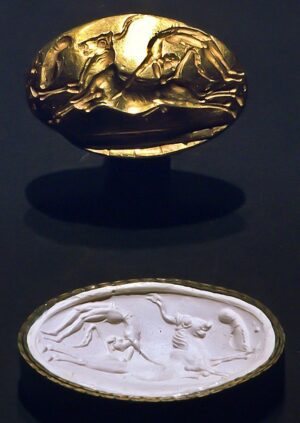
The ancient Aegean Bronze Age Minoan and Mycenaean civilizations are most popularly known for their 2nd Millennium B.C. period monumental palaces and their magnificent, stylish wall painting frescoes (particularly those of the Minoans), as well as numerous clay tablets and other artifacts bearing the Linear A and Linear B scripts. Equally important, however, are the markings the Aegean people created on small seals and sealings which have come to light over the years through excavations and private collections.
In the 4th episode of Dr. Ester Salgarella’s ongoing podcast series, Aegean Connections, Dr. Sarah Finlayson, Research Fellow in the Department of Aegean and Textile Archaeology, University of Warsaw, enlightens listeners about how these otherwise small objects of antiquity carry big value in terms of furthering our understanding of the ancient Aegean civilizations. In this production, Dr. Finlayson makes the point that much can be revealed in small things forgotten.
Learn more about this by listening to the podcast episode, Are we hitting the ‘mark’? Exploring marking practices in the Bronze Age Aegean.
Cover Photo, Top Left: Minoan Seal, 1700 BC, Badisches Landesmuseum Karlsruhe – Special Exhibition 2001. Andree Stephan, CC BY-SA 4.0, Wikimedia Commons
_____________________________
Advertisement





